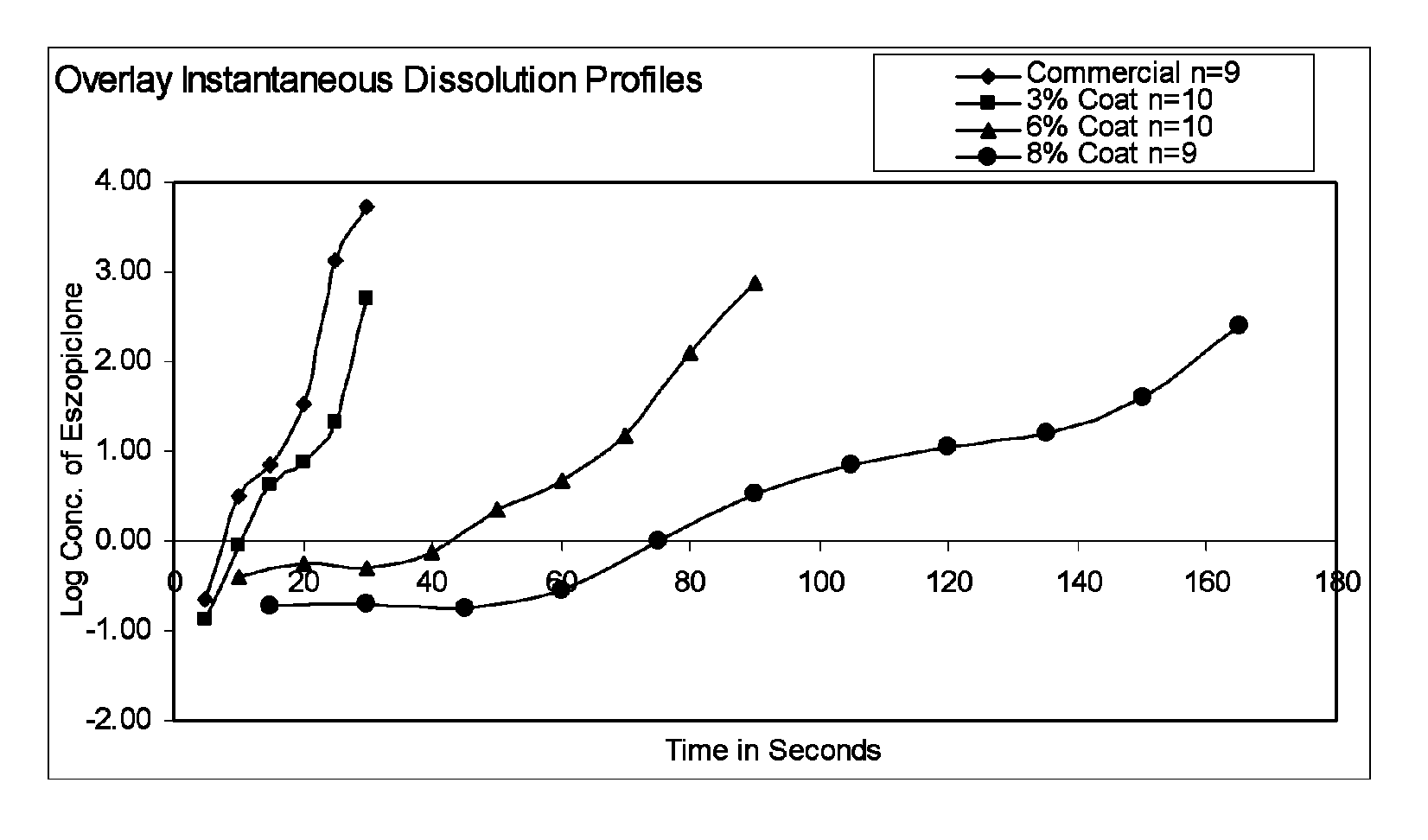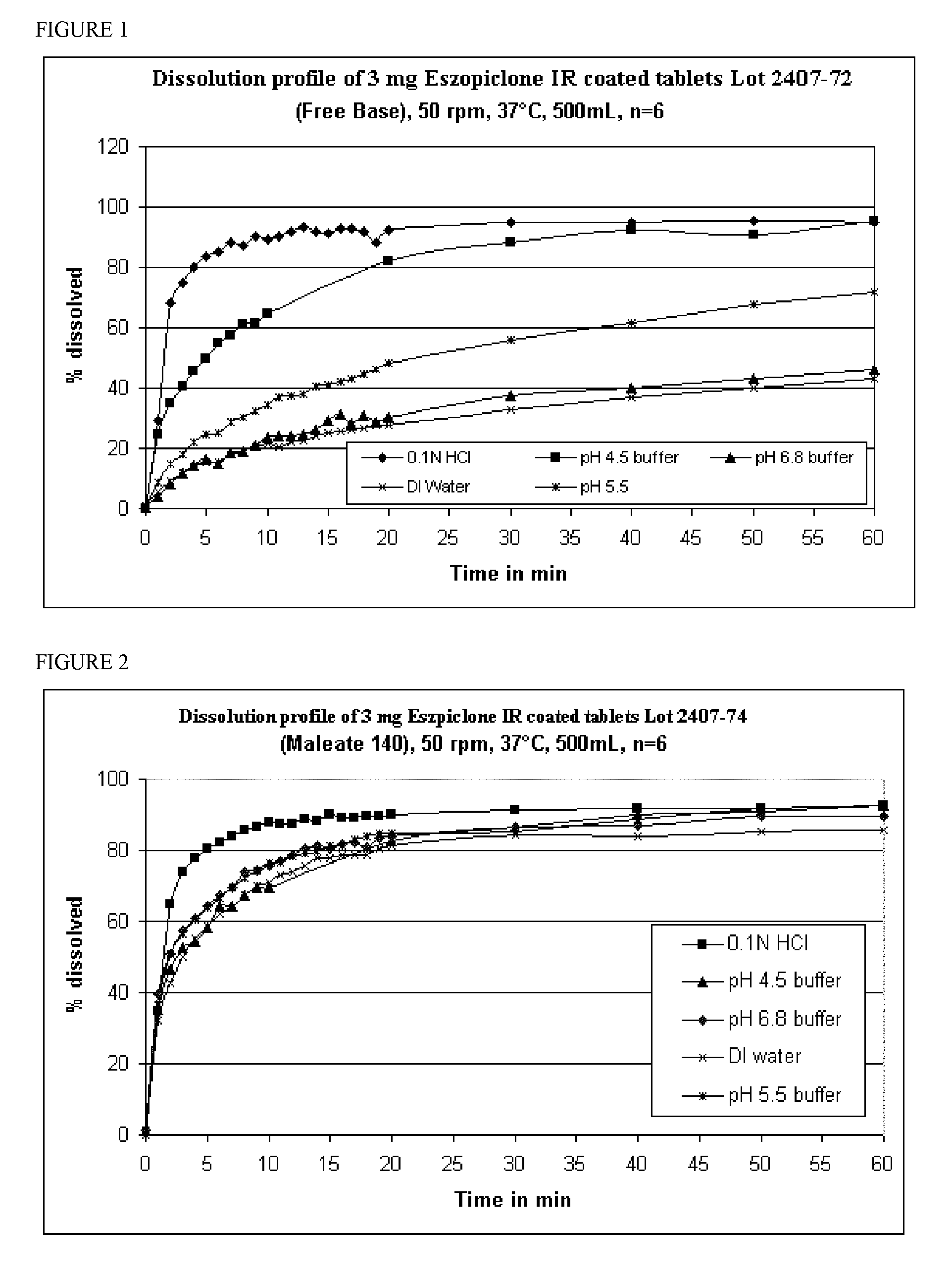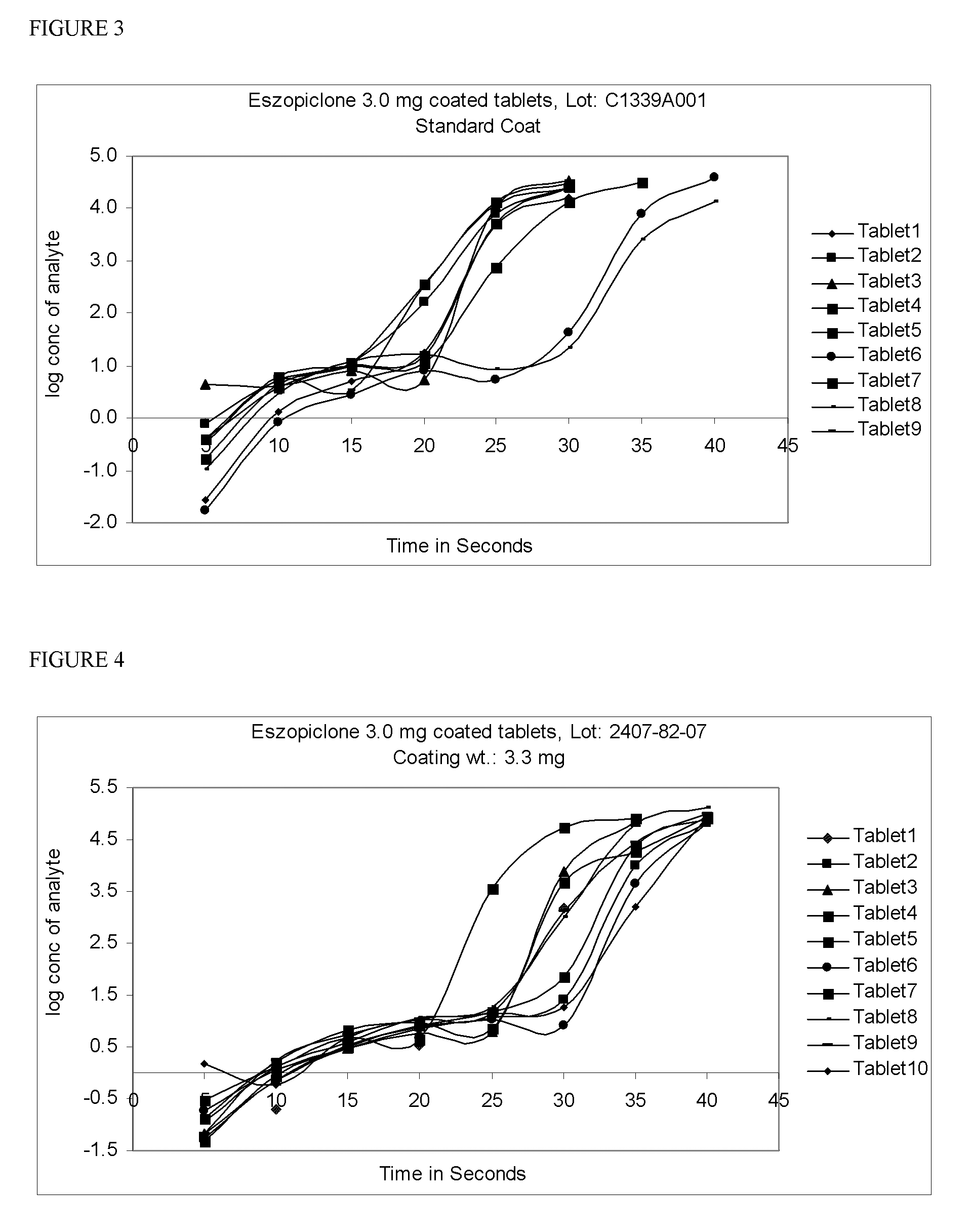Coated tablets of eszopiclone
a technology of eszopiclone and tablets, which is applied in the direction of coatings, drug compositions, nervous disorders, etc., can solve the problems of not only time-consuming, but also requires large and expensive clinical studies, and the dissolution method is not capable of capturing the dissolution profiles of tablets
- Summary
- Abstract
- Description
- Claims
- Application Information
AI Technical Summary
Benefits of technology
Problems solved by technology
Method used
Image
Examples
example 1
Eszopiclone 3.0 Mg Coated Tablets (Opadry® tm Coat)
[0119]18 kilograms of eszopiclone cores (3.0 mg per tablet) were coated with an Opadry coating dispersion. The Opadry dispersion of this example was made by mixing 14.58 kg of purified water with 1.62 kg of Opadry tm (07F99077, Blue), resulting in a 10% solids content, for 45 minutes in a vortex at 24° C. at 750 rpm. 100 g of the coating suspension was removed and found to have a viscosity of 336.5 cP (25° C.). The mixture was then de-aerated by mixing at a low speed for approximately one hour.
[0120]The 18 kg of core tablets (eszopiclone 3.0 mg, single dedusted cores) were loaded into a 24-inch O'Hara Labcoat Model IIX pan, which has 4 mixing baffles, a peristaltic pump, 96440-25 Masterflex tubing, 2 Spraying Systems guns (SUV113A), VF-3578-SS or VF-3578-316SS nozzles and VA113293-60-316SS or CO-VF-3578-SS air caps, for coating. The two spray guns were set to 35 g / min (70 g / min total spray rate). After 100 minutes, the desired 4.5% ...
example 2
[0123]A solids content range study was conducted on a 1 kg scale. The 7% and 10% solids content samples had comparable appearances, while the 13% solids content surface was rougher. The table below illustrates viscosity results and the run time required to achieve a 4% coating weight gain.
[0124]
Run Time for 4%Solids Content (%)Viscosity (cP)Weight Gain (min)711663104364413118032
example 3
Taste Assessment
[0125]An open-label multiple-dose study of the taste profile of eszopiclone tablets was utilized to perform taste assessments. For the purpose of testing the compositions described above, the flavor profile panel consisted of four persons who have normal ability to smell and taste, have been trained in fundamental sensory principles and all aspects of the Flavor Profile technique and have considerable experience as panel members. The samples to be profiled were uniform and representative. Sample preparation and presentation were standardized and controlled.
[0126]The Flavor Profile is an art-recognized descriptive sensory analysis method used to measure the type and intensity of attributes in products and ingredients. [see Keane, P. The Flavor Profile Method. In C. Hootman (Ed.), Manual on Descriptive Analysis Testing for Sensory Evaluation ASTM Manual Series: MNL 13. Baltimore, Md. (1992).] It is based on the concept that flavor consists of identifiable taste, odor (...
PUM
 Login to View More
Login to View More Abstract
Description
Claims
Application Information
 Login to View More
Login to View More - R&D
- Intellectual Property
- Life Sciences
- Materials
- Tech Scout
- Unparalleled Data Quality
- Higher Quality Content
- 60% Fewer Hallucinations
Browse by: Latest US Patents, China's latest patents, Technical Efficacy Thesaurus, Application Domain, Technology Topic, Popular Technical Reports.
© 2025 PatSnap. All rights reserved.Legal|Privacy policy|Modern Slavery Act Transparency Statement|Sitemap|About US| Contact US: help@patsnap.com



